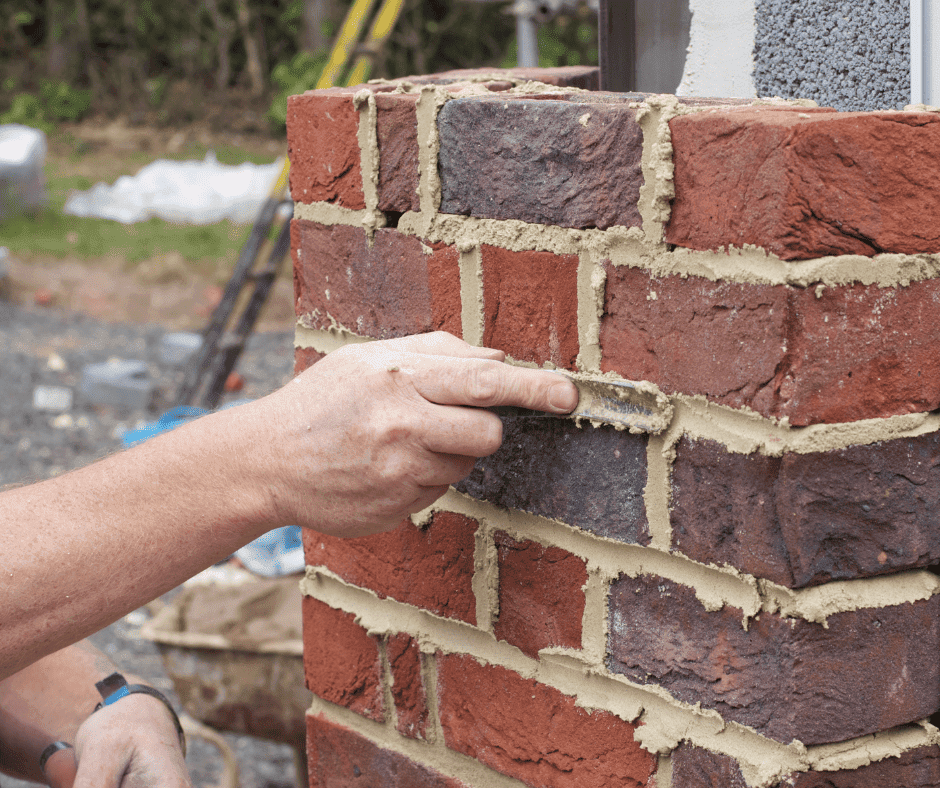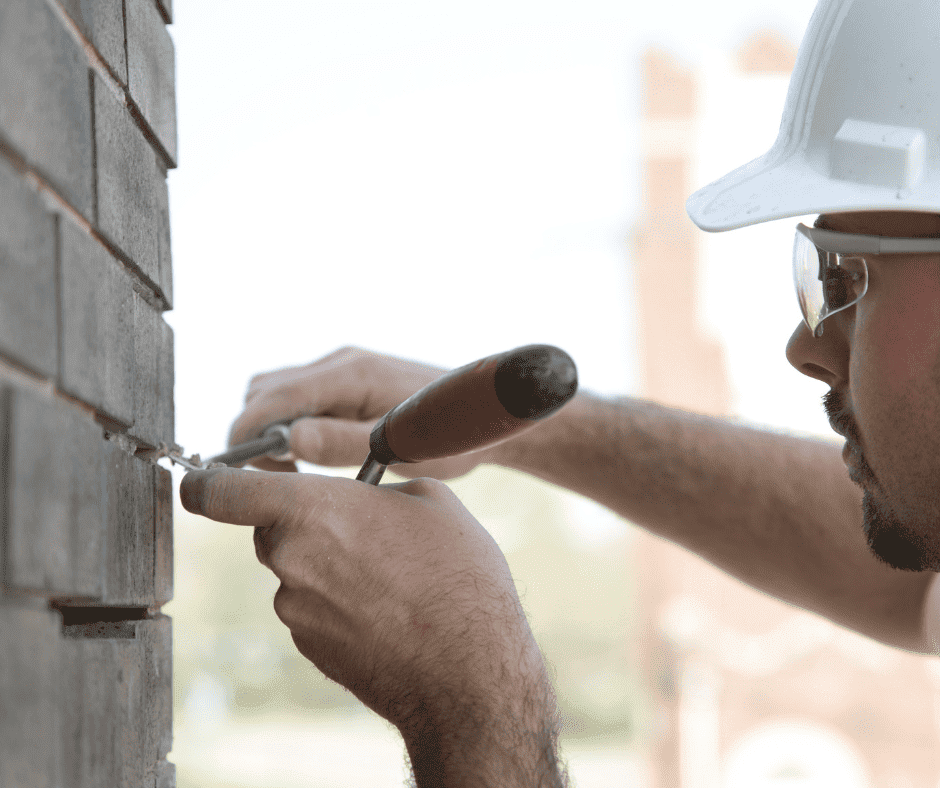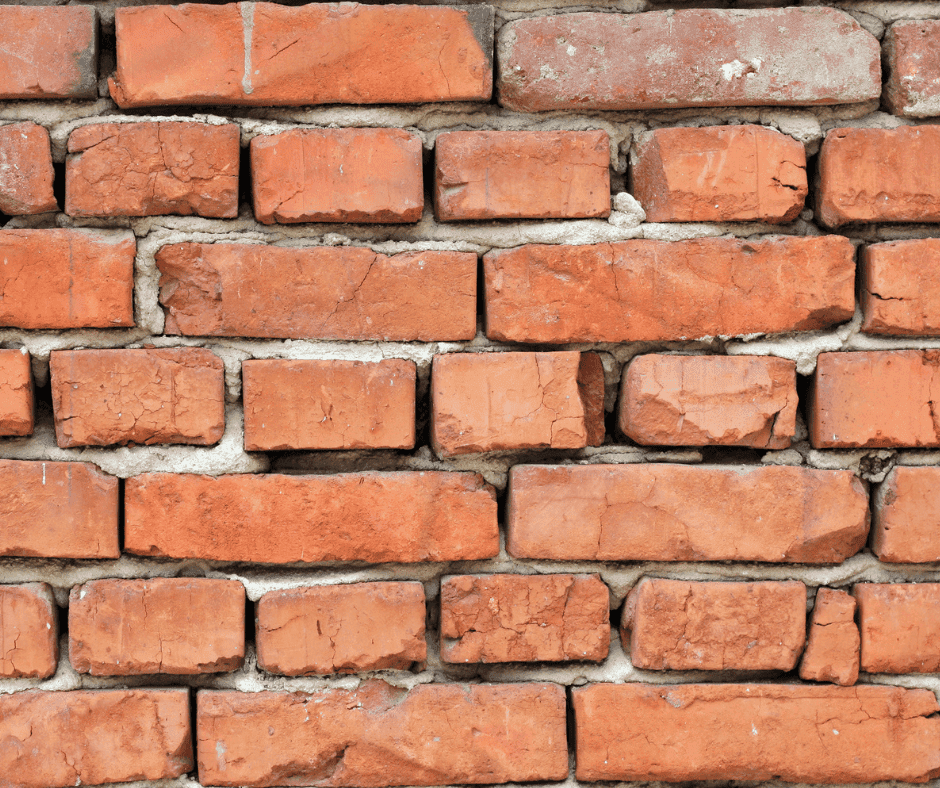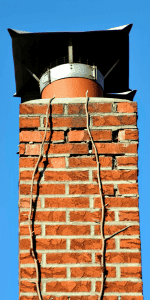In Main Line, PA it isn’t uncommon for old homes built from beautiful, durable stone or brick to need some necessary pointing work done by our team. We often get calls for repointing work, but sometimes our clients video a problem they’re seeing and don’t exactly know what needs to be done. If we see that the space needs repointing, we talk to them about the process and what it means for their home. But a lot of people ask us: “What is repointing and why does my home need it?”
In this post, we’re going to break it down in simple terms so you can make an informed decision.

What is Pointing?
The term pointing can be defined as the finishing of mortar joints located between brick or stone. As we’re very proud to repeat, masonry materials last a long time. Brick and stone are durable, and they don’t damage easily. Unfortunately, the mortar between these materials doesn’t last as long, and it requires maintenance to keep the structure’s integrity intact.
Repointing is the process by which masons remove deteriorated or damaged mortar from the joints and replace it with new mortar. Not only will repointing improve the stability of the structure itself, but it will also benefit the aesthetic appeal of your stone or brick as well.
Though repointing is beneficial, it is not an easy remedy to any lingering structural deficiencies your home might be suffering from. It’s important to find the source of the problem you’re experiencing before assuming a repoint job will fix it. Ask your local masonry professional to take a look at the area before planning any work.

What’s the Process?
1. Examination/Consultation
Before starting any work, a proper examination of the structure must be conducted in order to assess the extent of repointing that needs to be completed as well as the damages that might have resulted from the eroded mortar.
2. Obtain Materials
It’s always a good idea to try to match the new materials as closely as possible with the old ones. You don’t want the repaired area to stick out in any way and cause any aesthetic dissonance on the exterior of your home.
It’s also important that the mortar you use has similar characteristics to the original mortar used. This way the old and new joints share the same give. If you use stronger mortar for one section that section might not give into structural stresses that the other section will, resulting in cracks.
3. Remove Old Mortar
Next the mason starts the process of removing the old mortar from the joints. After removal it’s important to clean the joints before filling them with new mortar.
4. Apply New Mortar
First the mason will fill the areas with the deepest recessions, and then they will continue to apply the mortar in several layers. The mortar should be manipulated using the proper tools to imitate your desired style.

Bonus Question & Answers:
What’s the difference between pointing and tuckpointing?

We’ve already covered what repointing is, but you might have heard of a term called tuckpointing as well. Though both terms are often used interchangeably, tuckpointing is different from simple repointing because it involves closely matching the colors of the bricks and embedding narrow lines of putting in a different color in the middle of the joints. They’re aesthetically different.
How often do I need to repoint my brick?
Typically mortar holds up for about 25 years or so. This is also heavily influenced by the maintenance and care given to the masonry over the course of its life.
What if I don’t repoint my brick or stonework?
If you hold off on repointing your brickwork/stonework, you risk further damage caused by moisture leaking into your joints. This can erode your bricks and cause an even more expensive project down the road.
How do you know if you need repointing?
Take a look at the stone/brick. Are there cracks in the mortar you can clearly detect? Do you see any gaps between the bricks or stone? Are the bricks/ stone loose? Is water leaking into the interior of the home?
If you answered yes to any of these questions, you may need repointing.
Still have questions? Leave a comment and we’ll do our best to answer your specific concern. If you’d like us to take a look at the area you’re worried about, send us a video and we’ll call you to discuss your options.
Subscribe for more masonry-related tips and blogs delivered to your inbox every two weeks!
